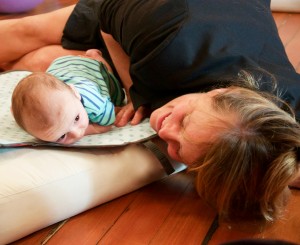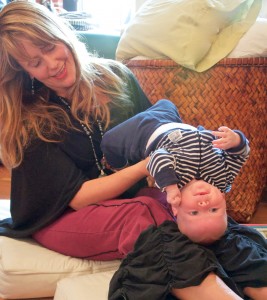 Craniosacral Therapy
Craniosacral Therapy
A newborn CST session can minimize or eliminate the repercussions of difficult births and help ensure good health for well babies. All babies should receive newborn Craniosacral evaluations and treatments as soon as possible after birth. Children should continue to receive pediatric CST periodically throughout childhood as they grow and develop.
A Typical Infant CST Session
Babies rest fully clothed in my lap or their parent’s lap. Sometimes they sit, crawl or play with toys on the floor during the treatment. They don’t need to hold still. I adapt my techniques to the attention span and needs of the child. I conduct other gentle assessments and monitor the craniosacral rhythm with my hands I correct the sources of pain and dysfunction using gentle manipulative techniques. The techniques do not hurt babies. Seldom does the pressure exceed five grams (the weight of a nickel). The work is very gentle. Most infants find the sessions to be deeply relaxing. Babies will often sleep for a longer stretch than usual after a session.
Getting Born
During the birth process, the baby’s head molds to fit through the mother’s pelvis. It is normal for the cranial bones to override each other. After birth, these overrides and other accommodations in the baby’s skull should not persist. If they do not correct themselves, they can interfere with proper cranial nerve function leading to colic, breathing, swallowing, digestive or sensory-motor impairments and more. Sometimes babies are injured in the birth process. The injuries may be both physical and emotional. CST can address these injuries as well as the effects of lack of normal mobility in utero, precipitous or prolonged labor, vacuum extraction, forceps or cesarean birth.
 Surgical Birth
Surgical Birth
Cesarean birth can be harder on babies than we imagine. Cesarean-born babies have lower Apgar scores, more respiratory distress, more abnormal neurological exams, and more abnormal Craniosacral evaluations. They have more chronic middle ear infections and other problems throughout childhood. The birth process is more abrupt and potentially more frightening than vaginal birth. Surgically born infants have fewer quiet alert periods right after birth and have less opportunity to share bonding time with their mothers who may be unconscious or recovering in another room. CST can effectively address all of these things.
Craniosacral Therapy Can Help:
• Fussy, hard to soothe babies
• Babies who seem uncomfortable in their bodies
• Babies who have digestive or elimination difficulties
• Reflux
• Colic
• Spitting up
• Breastfeeding problems
• Difficult latching
• Latch problems that contribute to sore nipples for moms
• Babies who favor turning their heads to one side
• Babies who favor one breast or position for nursing
• Babies who seem overly sensitive
• Babies who hate tummy time
• Teething babies
• Non-sleeping babies
• Babies who are developing flat spots on their heads